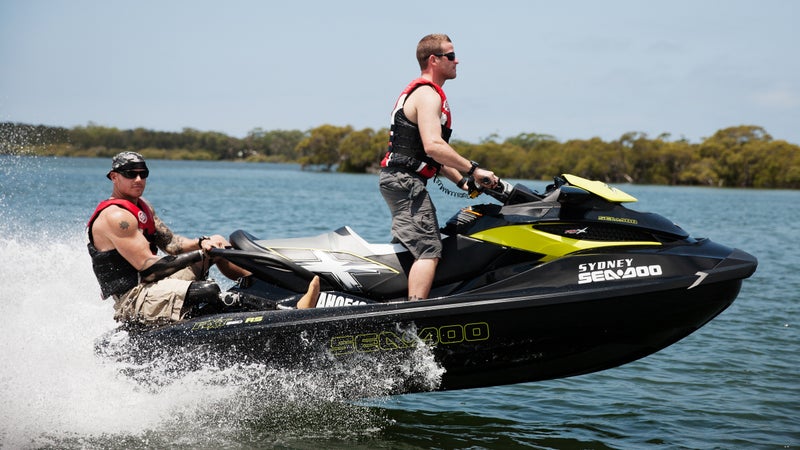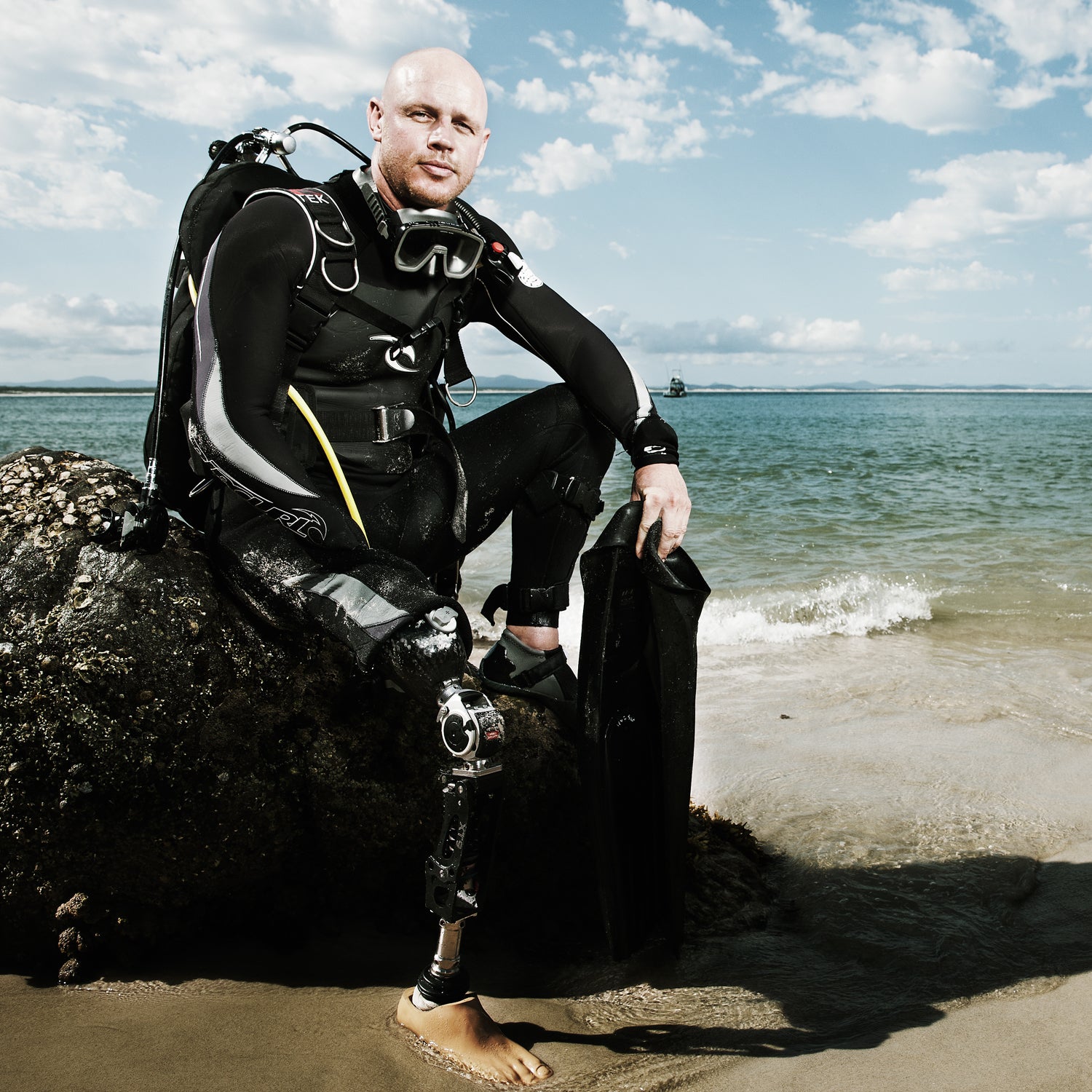Paul de Gelder. Six year ago, the former Australian Navy clearance diver was out in Sydney Harbor for an anti-terrorism exercise when a bull shark attacked him, biting off his right hand and mangling his right leg so badly that it had to be amputated below the knee.
A few months later, after receiving prosthetic limbs, de Gelder was back free-diving in the water. He's now in the Navy reserves and evolved into an unlikely advocate for sharks. He dives with them, often for television shows. On Tuesday, as part of its Shark Week lineup, Discovery Channel is airing a program de Gelder co-hosted with underwater photographer Andy Casagrande, called , in which the two search for the largest female great white on Earth (it airs at 9 p.m. Eastern time).
We caught up with de Gelder between dives to ask about his techniques for remaining Zen when you’re in the water staring down the snout of a prehistoric predator.

1. Accept That Though You're in Their Territory, You're Not on the Menu
When you get into the water, you’re entering the realm of the shark, de Gelder says. “Realize that they are there, that’s where they live, and that’s where they’re gonna be,” he says. “Accept that fact.” Though there may be the occasional exploratory nibble, sharks don’t naturally see humans as food. “We’re not on the menu,” de Gelder says.
2. Don’t Look At Their Mouths
Back in 2013, de Gelder that required him to dive with bull sharks, the same species that took his hand and leg. His support crew chummed the water to draw them in, but it also attracted other species, including nurse sharks. “Nurse sharks have these mouths full of rows and rows of nasty looking teeth,” de Gelder says. “I didn’t spend too much time looking at their mouths. I focused on their tails instead.” That was also the first time he had come face-to-face with bull sharks since the attack, but it went off without a hitch. As he told 60 Minutes, “my biggest problem was my [prosthetic] leg kept falling off.”
3. Steady Your Breathing and Talk to Yourself
“Everyone has an innate fear of being eaten alive,” de Gelder says. “But more people die from cows than from sharks.” Even so, a swimmer's nerves can fray easily around these animals, causing moderate hyperventilation. Not unlike working an operation as a Navy diver. When de Gelder was an active diver, he’d focus on steadying his breathing in stressful situations. “A lot of the stuff the Navy does is pretty crazy,” he says. “We were often diving in areas where it’s so murky and dark and you can’t see your hand in front of your face. Taking away that sense makes [being in the water] much more daunting.” Talking also helps. It’s one of the few times when it’s socially acceptable to talk to yourself, he says. “Say everything’s ok, everything’s ok.”
4. Keep Your Hands to Yourself
There is such a thing as being overconfident, though. Spurred by , some divers may be tempted to try to put a shark into tonic immobility, whereby touching a specific spot on the shark’s nose overloads its sensors and puts it in a sort of trance. “People think they can do this,” de Gelder says. “Don’t. It’s only for people who know these animals quite well.”
5. Act Natural
Losing your cool and thrashing around is the easiest way (other than diving with an open wound) to join the ocean’s food chain. The pressure from the moving water might cause the sharks to mistake you for a meal. Lateral lines that run along the shark’s sides from head to tail pick up on vibrations and tee them off to whether there might be a predator or prey nearby. So when you feel a cold sweat breaking out, remind yourself that panicking will only make things worse. “You put yourself in the food cycle when you do that,” de Gelder says.


